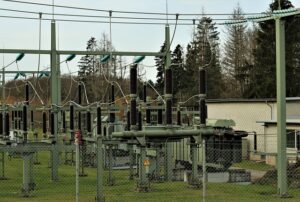Transformers play a crucial role in electrical power distribution, converting voltages for efficient transmission and utilization.
Neutrality in transformers refers to the presence of a neutral connection, which serves various functions in electrical systems. Not all transformers have a neutral. The presence of a neutral in transformers depends on their configuration and the specific requirements of the electrical system.
In this article, we will explore the concept of neutrality in transformers, examine different transformer configurations, discuss factors influencing the presence of a neutral, highlight its importance, and touch upon exceptions to the rule.
Table of Contents
Understanding Transformers
Transformers are electrical devices that transfer electrical energy between two or more circuits through electromagnetic induction.
They consist of primary and secondary coils wound around a magnetic core, enabling voltage transformation.
Transformers facilitate the efficient transmission of electricity over long distances and provide appropriate voltage levels for different applications.
The Concept of Neutrality in Transformers
Neutrality in transformers refers to the availability of a neutral connection, which acts as a reference point for the electrical system.
The neutral carries the imbalance of current in the system and provides a return path for single-phase loads.
It helps maintain a balanced distribution of electrical power and enables fault detection and protection mechanisms.
Do All Transformers Have a Neutral?
The presence of a neutral in transformers depends on their configuration and the electrical system they are designed for.
Let’s explore the different types of transformers and their corresponding neutral configurations:
Single-Phase Transformers
Single-phase transformers are commonly used in residential and small-scale applications. They can have two primary configurations:
Delta (Δ) Configuration:
In this configuration, the primary and secondary windings are connected in a triangular pattern without a neutral connection.
Delta transformers are suitable for three-wire distribution systems where a neutral is not required.
Wye (Y) Configuration:
In the wye configuration, the primary and secondary windings are connected in a star pattern, with the neutral point available.
Wye transformers are commonly used in four-wire distribution systems, providing a neutral for single-phase loads and facilitating balanced power distribution.
Three-Phase Transformers
Three-phase transformers are utilized in industrial and commercial settings, where higher power demands exist. Several configurations are possible:
Delta-Delta (Δ-Δ) Configuration:
In this configuration, both the primary and secondary windings are connected in a delta pattern, without a neutral connection.
Delta-delta transformers are typically employed in three-wire distribution systems without the need for a neutral.
Wye-Delta (Y-Δ) Configuration:
This configuration involves connecting the primary winding in a wye pattern and the secondary winding in a delta pattern.
The primary side provides a neutral, while the secondary side lacks a neutral connection. Y-Δ transformers are commonly used in applications where the primary side requires a neutral for balanced loads.
Wye-Wye (Y-Y) Configuration:
In the wye-wye configuration, both the primary and secondary windings are connected in a wye pattern, allowing for a neutral connection on both sides.
Y-Y transformers are suitable for four-wire distribution systems where a neutral is necessary.
Read also my article: Breaking it Down: Does an Electric Motor Really Need a Neutral?
Factors Influencing the Presence of a Neutral in Transformers
The presence or absence of a neutral in transformers is influenced by several factors, including:
Voltage Systems and Requirements:
The design of electrical systems and the desired voltage levels play a significant role in determining the presence of a neutral.
Different voltage systems have specific requirements regarding neutral connections.
Load Characteristics and Distribution:
The type of loads connected to the transformer and their distribution affect the need for a neutral.
Unbalanced loads may require a neutral connection for proper power distribution.
Safety Considerations and Grounding:
Electrical safety codes and regulations mandate specific grounding practices.
The presence or absence of a neutral may be influenced by safety requirements and grounding techniques employed in the electrical system.
Importance of a Neutral in Transformers
The presence of a neutral in transformers carries several advantages and plays a critical role in electrical systems:
1. Balanced Power Distribution:
The neutral facilitates the distribution of electrical power by providing a return path for single-phase loads.
It helps maintain balanced voltages and reduces the risk of voltage fluctuations and unbalanced loads.
2. Fault Detection and Protection:
The neutral connection enables fault detection mechanisms, such as ground fault detection, which helps identify and mitigate electrical faults.
It plays a crucial role in protecting the electrical system and preventing potential hazards.
3. Grounding and Electrical Safety:
A neutral connection is essential for proper grounding practices in electrical systems.
It helps provide a safe path for fault currents, protecting people and equipment from electrical shocks.
Exceptions to the Rule
While most transformers adhere to the standard configurations discussed earlier, there are exceptions.
Certain specialized transformers, such as autotransformers or isolation transformers, may not necessarily have a neutral connection.
These transformers serve specific purposes and are designed accordingly.
Conclusion
Neutrality in transformers is not a universal feature. The presence of a neutral depends on the transformer configuration and the requirements of the electrical system.
Understanding the concept of neutrality, along with the factors influencing its presence, is crucial in designing and operating electrical systems effectively.
The neutral connection plays a vital role in ensuring balanced power distribution, facilitating fault detection and protection mechanisms, and maintaining electrical safety.
By considering the specific needs of the application, engineers can determine whether a neutral is necessary for a particular transformer configuration.
Don’t Leave Empty-Handed!
Install my Free Android App on Google Play:
Electrical Cables Most Common Tables “Cables Tables”
And, my Electrical Calculations App “Fast Electrical Calculator”
Discover more great content by subscribing to My channel
Looking to stay ahead of the game in the world of electrical engineering? Subscribe to my YouTube channel and gain access to exclusive content you won’t find anywhere else!
The staff I recommend
(Amazon Affiliate Links to products I believe are high quality):
- Economy 120 Volt/60Hz AC Power Source – Step-Down Voltage & Frequency Converters 1800W
- UNI-T Digital Multimeter Tester UT139C
- 50-Amp Extension Cord for RV “100ft”
- Voltage Stabilizer 110/220v
- Hair Dryer “best selling“
- TOSHIBA EM131A5C-BS Countertop Microwave Ovens
Disclaimer: This contains affiliate links to Amazon products. I may earn a commission for purchases made through these links.



